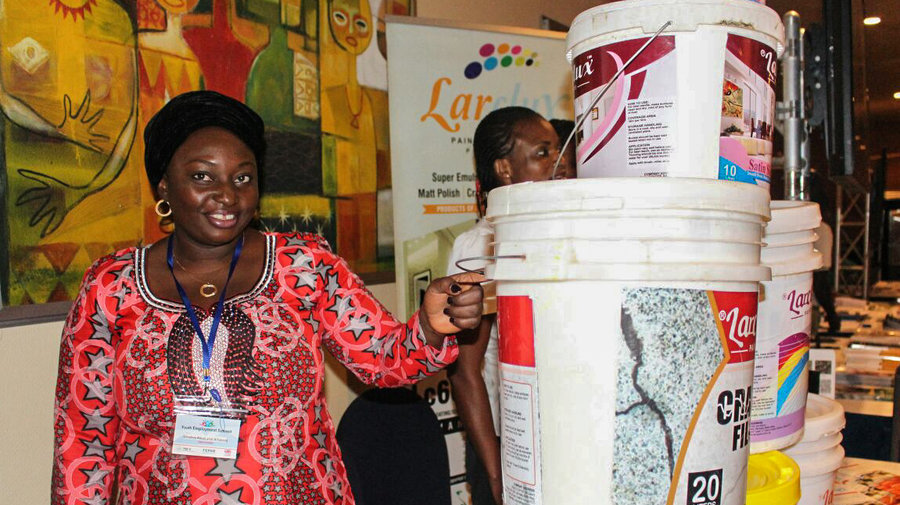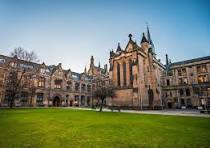Did you know that you can actually make your own paint for sale to local hardware shops? Paint production is a profitable business venture you should consider as an option. You just need to look at the demand for real estate or the number of new buildings or homes coming up. So how does one start a paint making business? Read more about this business below from the information we found from Nigeria where Paint Making is BIG BUSINESS:
Paint product is in three major category: We have emulsion, Textcoat and Satin (Nylon paint).You can start your home-based paint production with as little as $600. The raw materials are readily available in the local market. You don’t need any expensive equipment to produce paint; you only need some buckets and your two hands to do the mixing.What is left for you to do is to penetrate and capture the market by producing good quality paints and marketing it very well.
Hence, for a small scale business, it might require you to have at least a half plot of land for the production environment after a successful registration of your business name and the approvals from Standard Boards. With a minimum number of five employees you can fairly begin the production.Though, with just two people paint production can be done based on the scale of production within a room space environment especially for a very small beginner.
In order to survive the choking dominance of the market leaders in the industry, new start-ups can map out their self-sustaining marketing strategy. While some could afford to distribute in the open markets to compete amongst others, some may solely depend on personal contacts and placing of orders before embarking on production.
Here are some of the essential chemicals that must be in place to achieve a desired high quality paint:
1. Water
2. Titherni (used only for the production of white paint)
3. Calcium carbonate (calcium)
4. Colourite
5. P.V.A
6. Formalin
7. Nitrosol
8. Ammonia
9. Hydrosol
10. Marble dust
11.Geniple
12.Bama cork
13. Buffa Solution
Steps to making Emulsion Paints
Emulsions are those ordinary paints that are not roughened with sand-like objects but plain. It could come out in different beautiful colours.
Step 1.
Mix Calcuim Carbonate in water for one bucket production (hence we shall be referring to bucket i.e. normal — 20 litres of paint as drum), pour water in the bucket up to half (10 litres of water) you can always increase the volume of water at any stage if necessary. Add less than half bag of Calcuim (add until the mixture rises to about 17 liters in the bucket) by now the drum will be quarter empty.
NOTE: if you are producing white paint, you will mix titherni in water before adding calcium. Few spoons of titherni are enough. Mix very well.
Step 2:
Add your colour. It is assumed that by now you must have diluted the colours as required with water if they are oxide. Now put colour in small rations and keep turning until you get your desired result. You can always add more if you like. Suppose you added more yellow for example, than you need, you can correct it by adding more calcium (but not after this stage) Bear in mind that the colour may be deeper when wet and lighter when the paint is dried.
Step 3
Add 1kg of P.V.A to the mixture. After turning, add half glass cup of nitrosol. Nitrosol is always in powdery form so you must dilute it in small water before adding it to your mixture.
Next in the process is to add about 10 centilitre of formalin and about same volume for ammonia and hydrosol sequentially. Turn very well at any addition of a new chemical.
When you have completed the above steps, make sure you turn the above mixture very well. As you are turning it you might be a little fidgeted that you have wasted your resources. You don’t need to be afraid. Just add acrytext to the mixture and turn. Add it in small quantity until you get the thickness you desire. However if you add excess you might spoil your mixture. When you finally arrived at the desired thickness, then, the adventure has come to an end and a product called Emulsion paint is produced and ready to be used.
Warning: Please the chemicals must be added in the order it`s stated above. If not, you may have problem; for example, if you put ammonia before Nitrosol, the paint will get blocked or coagulate. And if ammonia drops in Nitrosol, the Nitrosol will get blocked as well. More so, when formalin is poured into ammonia it will explode. The only time you can add ammonia before Nitrosol is when you are turning on machine speed. Just be careful.
Production of Textcoat
Step 1:
Pour about 10 liters of water into the bucket, add 1 bag of Calcuim (or less) then add your colours as it is supposed to be.
Step 2:
After turning the mixture above, you will need to add marble dust. You will notice that some textcoat paints have a kind of lining and some have only rough surface. And there are those that are called designer textcoat, such are the ones that are used with the aid of a special roller to design houses so that its end effect will be something like flowers or blocks made of paint in houses. It is called artwork in the painting industry. All these are textcoat but it is the mode of application of this chemical that brings out the artwork variation.
For rough textcoats, use only rough marble dust in your production. For lining textcoats, use a combination of rough and smooth marble dust in equal ratio. For artwork textcoats, use only smooth marble dust in production.
In adding the marble dust, you will notice that the volume of your mixture is increasing. Just add according to your own discretion because there is no specific measurement. If you are confused on the quantity to add, just keep adding until the drum is half empty. Use your initiative. Please do not use only smooth marble dust for production unless you are producing artwork that needs a designer roller.
Step 3: When you are through with turning of this mixture (turn very well), you will now add your P.V.A. and other chemicals like we said in emulsion. However, you will need to increase their volume a little. For example you will need full glass cup of Nitrosol and increase the volume of other chemicals a little. When you have finished adding all the other chemicals up to Hydrosol, you may need the gym in order to activate your muscle for turning the paint as you add Acrytext. On the addition of acrytext the paint will become strong.
Now to know if the Acrytext you added is enough, take a small portion of the paint and paste it on the wall. If the teething is not falling, congratulations but if it is falling, add more. The journey to this end could deliver to you a ready- to- be –used Textcoat paint.
Satin (nylon paint)
This is called nylon paint because it is washable (Water can be used to wash it off when it`s dirty). Use About 10litres of water. Add calcium in a small quantity to make the paint light. What I mean is that the thickness of the paint at this stage will be less than the thickness it has when we are producing emulsion.
Now add your favorite colour.
You do NOT use P.V.A.
Add 1kg of buffa solution and 1kg of Nitro sol (just enough to make the paint thicker and drawing)
Add ammonia and formalin as usual and finally add1kg of hydrosol. With this simple process, you are sure to have a satin paint occupying a market space.
Do not miss out our Business Opportunities for South Africans book which is coming out in two weeks time.
![]()





